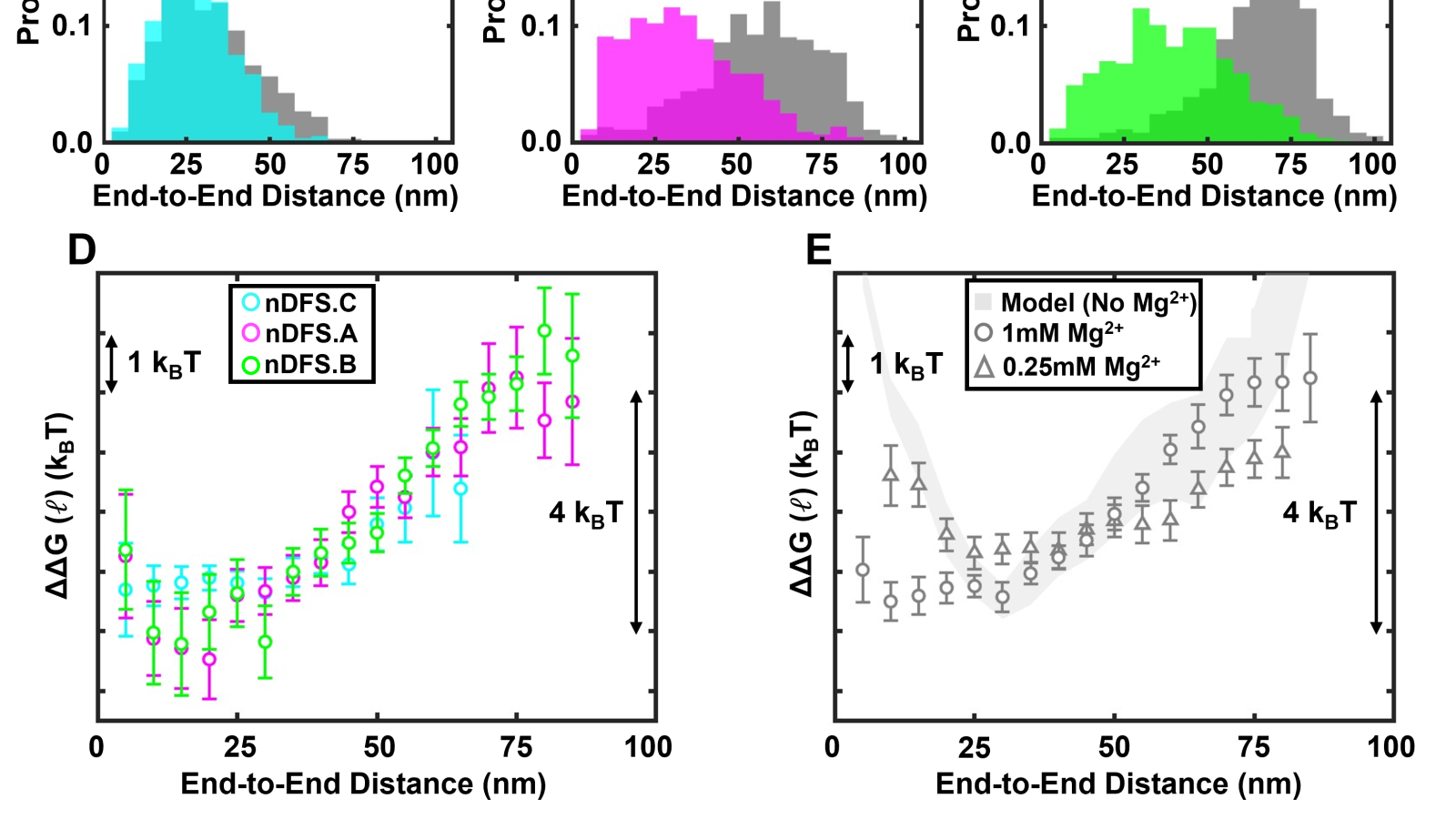Kalven Bonin
Contact Information
Graduate Student
Areas of Expertise
- Biophysics
Education
- B.S. Physics University of Minnesota - 2019
- M.S. Physics The Ohio State University - 2022
Link to preprint:
https://www.biorxiv.org/content/10.1101/2025.08.13.670082v1
I am currently studying the physical properties of chromatin using DNA origami force calipers. DNA is compacted in eukaryotic cells via a nucleoprotein (contains nucleic acids and proteins) complex called chromatin. The fundamental unit of chromatin is the nucleosome in which DNA is wrapped around a core of proteins called the histone octamer. There are many ways in which chromatin can be compacted including the facilitation of tighter DNA wrapping around the histone octamer and nucleosome stacking via adjacent histone octamer interactions. DNA origami nanocalipers can be used to measure forces and free energies associated with these interactions. This technique (DNA Origami Free Energy Spectroscopy (FES) ) can be used to experimentally determine the free energy landscape of the tetranucleosome as a function of its end-to-end distance. This builds upon previous studies which used force extension experiments with optical traps or magentic tweezer. FES can measure a continous free energy landscape at ~5nm resolution, which previously was only feasible using computational methods.




